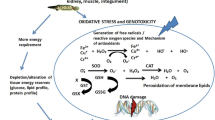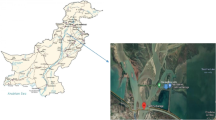Abstract
This study determined the partitioning of total mercury in liver, gonad, and cheek muscle of white sturgeon (Acipenser transmonatus) in the lower Columbia River. The relationship between tissue mercury concentrations and various physiologic parameters was assessed. White sturgeon were captured in commercial fisheries in the estuary and Bonneville, The Dalles, and John Day Reservoirs. Condition factor (CF), relative weight (Wr), and gonadosomatic index (GSI) were determined for each fish (n = 57). Gonadal tissue was examined histologically to determine sex and stage of maturity. Liver (n = 49), gonad (n = 49), and cheek muscle (n = 57) were analyzed for total mercury using cold-vapor atomic fluorescence spectrophotometry. Tissue protein concentrations were measured by ultraviolet-visible spectroscopy. Plasma was analyzed for testosterone (T), 11-ketotestosterone (KT), and 17ß-estradiol (E2) using radioimmunoassay. Mean tissue mercury concentrations were higher in muscle compared with liver and gonad at all sampling locations, except Bonneville Reservoir where mean liver mercury content was the highest tissue concentration observed in the study. Significant negative correlations between plasma androgens (T and KT) and muscle mercury content and plasma E2 and liver mercury content were found. A significant positive linear relationship between white sturgeon age and liver mercury concentrations was evident. Significant negative correlations between CF and relative weight and gonad and liver mercury content were found. In addition, immature male sturgeon with increased gonad mercury content had decreased GSIs. These results suggest that mercury, in the form of methylmercury, may have an effect on the reproductive potential of white sturgeon.





Similar content being viewed by others
References
Allen-Gil SM, Curtis L, Lasorra B, Crecelius E, Landers D (1993) Plasma testosterone as a sensitive biomarker to heavy metal exposure in feral arctic fish. 14th Annual Meeting of the Society of Environmental Toxicology and Chemistry, Houston, TX, November 14–18
Amer MA, Miura T, Miura C, Yamauchi K (2001) Involvement of sex steroid hormones in the early stages of spermatogenesis in Japanese huchen (Hucho perryi) Biol Reprod 65:1057–1066
Beamesderfer RCP, Elliot JC, Foster CA (1989) Report A. In: Nigro AA (ed) Status and habitat requirements of white sturgeon populations in the columbia river downstream from McNary DamAnnual Progress Report to Bonneville Power Administration, Portland, OR, pages 5–52
Beamesderfer RC (1993) A standard weight (Ws) equation for white sturgeon Calif Fish Game 79:63–69
Beamesderfer RCP, Rien TA, Nigro AA (1995) Dynamics and potential production of white sturgeon populations in three Columbia River reservoirs Trans Am Fish Soc 124:857–872
Bloom NS (1992) On the chemical form of mercury in edible fish and marine invertebrate tissue Can J Fish Aquat Sci 49:1010–1017
Boudou A, Ribeyre F (1983) Contamination of aquatic biocenoses by mercury compounds: An experimental ecotoxicological approach. In: Nriagu JO (ed) Aquatic toxicology. Wiley, New York, NY, pp. 117–136
Chowdhury AR, Vachhrajani KD, Chatterjee BB (1985) Inhibition of 3ß-hydroxy-Δ5-steroid dehydrogenase in rat testicular tissue by mercuric chloride. Toxicol Lett 27:45–49
DeVore JD, James BW, Tracy CA, Hale DA (1995) Dynamics and potential production of white sturgeon in the unimpounded Lower Columbia River Trans Am Fish Soc 124:845–856
Drevnick PE, Sandheinrich MB (2003) Effects of dietary methylmercury on reproductive endocrinology of fathead minnow Environ Sci Technol 37:4390–4396
Feist G, Schreck CB, Fitzpatrick MS, Redding JM (1990) Whole body sex steroid concentrations and gonadal histology in coho salmon during sexual differentiation Gen Comp Endocrinol 80:299–313
Feist GW, van Eenennaam JP, Dovoshov SI, Schreck CB, Schneider RP, Fitzpatrick MS (2004) Early identification of sex in cultured white Sturgeon, Acipenser transmartanus, using plasma levels. Aquaculture, 232:581–590
Fitzpatrick MS, Van Der Kraak G, Schreck CB (1986) Profiles of plasma sex steroids and gonadotropin in coho salmon, Oncorhynchus kisutch, during final maturation Gen Comp Endocrinol 62:437–451
Friedmann AS, Watzin MC, Leiter JC, Brinck-Johnsen T (1996a) Effects of environmental mercury on gonadal function in Lake Champlain northern pike (Esox lucius) Bull Environ Contam Toxicol 56:486–492
Friedmann AS, Watzin MC, Brinck-Johnsen T, Leiter JC (1996b) Low levels of dietary methylmercury inhibit growth and gonadal development in juvenile walleye (Stizostedion vitreum) Aquat Toxicol 35:265–278
Friedmann AS, Chen H, Rabuck LD, Zirkin BR (1998) Accumulation of dietary methylmercury in the testes of the adult brown Norway rat: Impaired testicular and epididymal function Environ Toxicol Chem 17:867–871
Friedmann AS, Costain EK, MacLatchy DL, Stansley W, Washuta EJ (2002) Effect of mercury on general and reproductive health of largemouth bass (Micropterus salmoides) from three lakes in New Jersey Ecotoxicol Environ Safety 52:11–122
Gloss SP, Grieb TM, Driscoll CT, Schofield CL, Baker JP, Landers D, et al. (1990) Mercury levels in fish from the upper peninsula of Michigan (ELS subregion 2B) in relation to lake acidity. EPA-600/3–90–068 U.S. Environmental Protection Agency, Washington, DC
Hammerschmidt CR, Sandheinrich MB, Wiener JG, Rada RG (2002) Effects of dietary methylmercury on reproduction of fathead minnows Environ Sci Technol 36:877–883
Handy R (1996) Dietary exposure to toxic metals in fish. In: Taylor E (ed) Toxicology of aquatic pollution. Cambridge University Press, New York, NY, pp 29–33
Harrison SE, Klaverkamp JF, Hesslein RH (1990) Fates of metal radiotracers added to a whole lake: Accumulation in fathead minnow (Pimephales promelas) and lake trout (Salvelinus namaycush) Water Air Soil Pollut 52:277–293
Hontela A, Dumont P, Duclos D, Fortin R (1995) Endocrine and metabolic dysfunction in yellow perch, Perca flavescens, exposed to organic contaminants and heavy metals in the St Lawrence River. Environ Toxicol Chem 14:725–731
Kime DE (1995) The effects of pollution on reproduction in fish Rev Fish Biol Fish 5:52–96
Kirubagaran R, Joy KP (1992) Toxic effects of mercury on testicular activity in the freshwater teleost, Clarias batrachus (L.) J Fish Biol 41:305–315
Lange TR, Royals HE, Conner LL (1994) Mercury accumulation in largemouth bass (Micropterus salmoides) in a Florida Lake Arch Environ Contam Toxicol 27:466–471
Lowry OH, Rosebrough NJ, Fan AL, Randall RJ (1951) Protein measurement with the Folin phenol reagent J Biol Chem 193:265–275
Luna LG (1968) Manual of histological staining methods of the Armed Forces Institute of Pathology. McGraw-Hill, New York, NY
Matta MB, Linse J, Cairncross C, Francendese L, Kocan RM (2001) Reproductive and transgenerational effects of methylmercury or aroclor 1268 on Fundulus heteroclitus Environ Toxicol Chem 20:327–335
Mauk RJ, Brown ML (2001) Selenium and mercury concentrations in brood-stock walleye collected from three sites on Lake Oahe Arch Environ Contam Toxicol 40:257–263
Morel FMM, Kraepiel AML, Amyot M (1998) The chemical cycle and bioaccumulation of mercury Ann Rev Ecol Syst 29:543–566
Moyle PB, Cech JJ Jr. (1996) Fishes: An introduction to ichthyology Prentice HallUpper Saddle River, NJ
Munn MD, Short TM (1997) Spatial heterogeneity of mercury bioaccumulation by walleye in Franklin D.Roosevelt Lake and the upper Columbia River, Washington Trans Am Fish Soc 126:477–487
Nicoletto PF, Hendricks AC (1988) Sexual differences in accumulation of mercury in four species of centrachid fishes Can J Zool 66:944–949
Ng TB, Liu WK (1990) Toxic effect of heavy metals on cells isolated from the rat adrenal and testis In Vitro Cell Dev Biol 26:24–28
Okuzawa K (2002) Puberty in teleosts Fish Physiol Biochem 26:31–41
Patiño RP, Sullivan CV (2002) Ovarian follicle growth, maturation, and ovulation in teleost fish Fish Physiol Biochem 26:57–70
Peterson SA, Herlihy AT, Hughes RM, Motter KL, Robbins JM (2002) Level and extent of mercury contamination in Oregon, USA, lotic fish Environ Toxicol Chem 21:2157–2164
Rien TA, Beamesderfer RC (1994) Accuracy and precision in age estimates of white sturgeon from pectoral fin rays Trans Am Fish Soc 123:255–265
Schmitt CJ, Brumbaugh WG (1990) National contaminant biomonitoring program: Concentrations of arsenic, cadmium, copper, lead, mercury, selenium, and zinc in U.S freshwater fish, 1976–1984. Arch Environ Contam Toxicol 19:731–747
Schulz RW, Miura T (2002) Spermatogenesis and its endocrine regulation Fish Physiol Biochem 26:43–56
Sorensen EM (1991) Metal poisoning in fish. CRC Press, Boca Raton, FL
Sower SA, Schreck CB (1982) Steroid and thyroid hormones during sexual maturation of coho salmon (Oncorhynchus kisutch) in saltwater or freshwater Gen Comp Endocrinol 47:42–53
Spry DJ, Wiener JG (1991) Metal bioavailability and toxicity to fish in low-alkalinity lakes: A critical review Environ Pollut 71:243–304
Stafford CP, Haines TA (1997) Mercury concentration in Maine sport fishes Trans Am Fish Soc 126:144–152
United States Environmental Protection Agency (1999) Method 1631, Revision B: Mercury in water by oxidation, purge and trap, and cold vapor atomic fluorescence spectrometry. EPA-821-R-99–005. Washington, DC
Van Eenennaam JP, Doroshov SI (1998) Effects of age and body size on gonadal development of Atlantic sturgeon J Fish Biol 53:624–637
Wiener JG, Spry DJ (1996) Toxicological significance of mercury in freshwater fish In: Beyer WN, Heinz GH, Redmon-Norwood AW (eds) Environmental contaminants in wildlife interpreting tissue concentrations. Lewis, Boca Raton, FL, pp 297–339
Acknowledgments
This research was funded by a Science Research Initiation Grant from the Murdock Charitable Trust and U.S. Geological Survey, (Award No. 99HQAG0152). Fin spine sections were aged by Ruth Farr and Michele Hughes at ODFW and by Joel Van Eenennaam and Javier Linares-Casenave at the University of California, Davis. We thank C. Anthony and R. Chitwood with Oregon State University for help sampling fish and R. Bratton and J. and L. Olbeiser with Gilmore Smokehouse and S. Fick (Fishhawk Fisheries) for allowing us to sample fish at their facilities. C. Kern and T. Rien (ODFW) provided historic Wr information for white sturgeon in the reservoirs of the lower Columbia River, and T. Rien provided valuable comments on an earlier draft of this manuscript. We also thank Dr. Serge Doroshov for reviewing this manuscript.
Author information
Authors and Affiliations
Corresponding author
Rights and permissions
About this article
Cite this article
Webb, M.A.H., Feist, G.W., Fitzpatrick, M.S. et al. Mercury Concentrations in Gonad, Liver, and Muscle of White Sturgeon Acipenser transmontanus in the Lower Columbia River. Arch Environ Contam Toxicol 50, 443–451 (2006). https://doi.org/10.1007/s00244-004-0159-0
Received:
Accepted:
Published:
Issue Date:
DOI: https://doi.org/10.1007/s00244-004-0159-0




